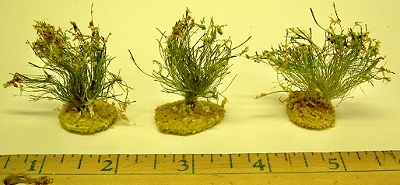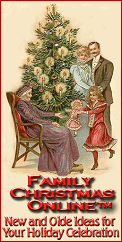 | |||
 |  |  |
 |  |
 |  | ||
 |  | ||
 |  | ||
(with a little help from Paul Race) for Big Indoor TrainsTM |

|
Note from Editor: Glitterhouse designer/builder Howard Lamey created these "sea grass" clumps to go along with a lighthouse project we are working on. This is how he explained this fun and simple project to me. Modeling Sea GrassI know that this technique is not new, but it works, and Paul tells me it is worth explaining to our readers.Along most beaches on the Atlantic coast, you'll see one species or another of "sea grass." It's no fun to walk on barefoot, but it is about the only thing that will grow in that environment, and its roots help protect the beach from being washed out to sea during rough weather. It also creates a habitat for a number of bird species you seldom see anywhere else. Near your display village structures or on your indoor railroad, it adds inexpensive charm and texture to any seaside scene. Materials
Making the Grass Clumps
 ConclusionPlease let us know if you find this project useful - we especially appreciate photographs. Return to the Sandy Shores page for more links to seaside projects. Return to the What is a Glitterhouse page for links to more putz (vintage cardboard house) projects. Return to the Big Indoor Trains Primer page for links to many more how-to and informative articles. Return to the Big Indoor Trains Home page. Many more links are shown below. For other articles on making foilage for indoor trains and towns, check out:
Other Articles about Glitterhouse include:
Other Putz House Resources:
To Return to the BIG Indoor Trains(tm) Primer Page, click here. |


|

|

|  |
 |
 |  |  |
Note: Big Indoor Trains(tm), Big Train Store(tm), Family Garden Trains(tm), Big Christmas Trains(tm), Garden Train Store(tm), and Trains and Towns(tm) are trademarks of Breakthrough Communications (www.btcomm.com). All information, data, text, and illustrations on this web site are Copyright (c) 1999, 2000, 2001, 2002, 2003, 2004, 2005, 2006, 2007 by Paul D. Race. Reuse or republication without prior written permission is specifically
forbidden.
Big Indoor Trains(tm) is a participant in the Amazon Services LLC Associates Program, an affiliate advertising program designed to provide a means for sites to earn advertising fees by advertising and linking to amazon.com.
For more information, contact us.
